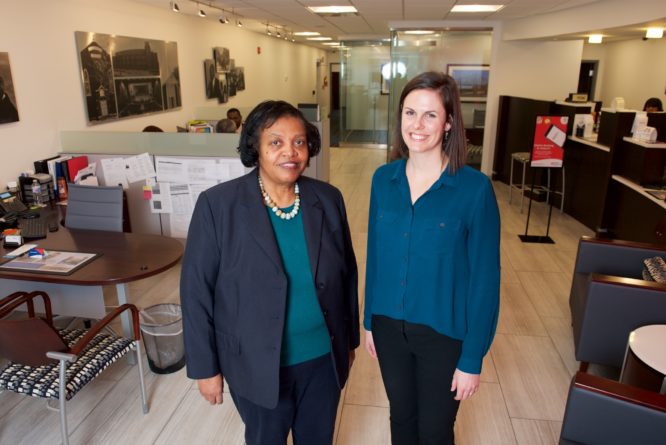Increasing Access to Care
The expert testimony, research, scholarship, and lived experience collected by the Commission revealed the following:
- Adults with insurance are more likely to have a usual source of care and access to preventive care (Ayanian et. al., 2000). Insured adults are therefore more likely to be up-to-date with their immunizations, more likely to receive cost-effective care, and are healthier (Ayanian et. al., 2000).
- Overall, uninsured people receive about half as much care as the privately insured (Ayanian et. al., 2000). Uninsured individuals are more than twice as likely to delay or forgo needed care as the insured (Kaiser, 2012). Delaying or forgoing needed care can lead to health problems, making the uninsured more likely to be hospitalized for avoidable conditions (Kaiser, 2012). The uninsured are less likely than those with insurance to receive preventive care and services for major health conditions and chronic diseases—and as a result, many suffer serious consequences (Kaiser, 2012).
- As of 2014, over half (55 percent) of uninsured nonelderly people in Missouri were eligible for financial assistance in gaining coverage under the Affordable Care Act (ACA) (Kaiser Family Foundation, 2014a).
- The ACA also authorized additional funding for states to expand Medicaid programs to cover adults under the age of 65 with incomes up to 133 percent of the federal poverty limit. States are allowed to decide whether to accept these funds and expand Medicaid. Missouri is one of 19 states (currently) that have not yet expanded Medicaid (Families USA, 2015). As a result, the Medicaid coverage for adults in Missouri is limited to those who have a dependent child and earn no more than approximately 18 percent of the poverty level, or roughly $2,900/year for a single mother with two children. Childless individuals are not eligible for Medicaid under any income circumstances unless they are disabled or pregnant.
- There is an absence of options for childless adults making between 0 and 100 percent of the federal poverty level, and for parents making between 18 and 100 percent of the federal poverty level, otherwise known as the coverage “gap.” Under the ACA, Medicaid expansion was intended to cover the many individuals making too little to qualify for subsidies on the exchange (those earning between 100 percent and 400 percent of the poverty level). In Missouri, though, these individuals qualify for neither Medicaid nor federal subsidies to help with the purchase of private insurance. That means a family of four earning up to $95,000 a year qualifies for assistance (on the exchange). A similar family earning $23,000 does not. In Missouri, nearly 200,000 adults fall into this gap. (Kaiser Family Foundation, 2014b).
- Until Missouri expands Medicaid, it must sustain funding for services like the Gateway to Better Health Demonstration granted to the State of Missouri by the Centers for Medicare and Medicaid Services. This Demonstration provides limited coverage to low-income, uninsured adults in St. Louis City and County (Regional Health Commission, 2014). The primary and specialty care made possible by this funding serves approximately 22,000 individuals and families and reduces reliance upon emergency rooms as sources of primary care. It is estimated that Gateway prevents on the order of 50,000-70,000 emergency department visits each year (Regional Health Commission, 2014).
These findings prompted the Commission to draft several calls to action for that call for ensuring access to care for more Missourians.
To that end, the Commission issues the calls to action found below.
Take Action
Change your environment
Build trauma-informed communities and spaces.
Support increased access to care
Contact your local state legislator to express your support for Medicaid expansion. Join local or state advocacy organizations to get involved.
Suggested Reading List
Missouri Foundation for Health (2014). Missouri Medicaid basics. Retrieved from: https://www.mffh.org/mm/files/MedicaidBasics2014.pdf
Citations
- Ayanian, J. Z., Weissman, J. S., Schneider, E. C., Ginsburg, J. A., & Zaslavsky, A. M. (2000). Unmet health needs of uninsured adults in the United States. Jama, 284(16), 2061-2069.
- Bouscaren, D. (2014). Missouri under the Affordable Care Act: Where are we? St. Louis Public Radio. Retrieved from:https://news.stlpublicradio.org/post/missouri-under-affordable-care-act-where-are-we
- Families USA (2015). A 50-state look at Medicaid Expansion. Retrieved from: https://familiesusa.org/product/50-state-look-medicaid-expansion
- Joiner, R. (2013). Medicaid coverage gap will affect more than 5 million Americans, including 193,000 in Missouri. St. Louis Beacon. Retrieved from: https://www.stlamerican.com/news/local_news/article_13f37280-1c13-11e4-b12f-0019bb2963f4.html.
- Kaiser Family Foundation. (2012). The uninsured and the difference health insurance makes. Retrieved from: https://kff.org/health-reform/fact-sheet/the-uninsured-and-the-difference-health-insurance/
- Kaiser Family Foundation. (2014a). State Marketplace Statistics, April 2014. Retrieved from: https://kff.org/health-reform/state-indicator/state-marketplace-statistics-2014/
- Kaiser Family Foundation (2014b). How will the uninsured in Missouri fare after the affordable care act?. Retrieved from: https://kff.org/health-reform/fact-sheet/state-profiles-uninsured-under-aca-missouri.pdf
- Missouri Foundation for Health (2014). Missouri Medicaid basics. Retrieved from: https://www.mffh.org/mm/files/MedicaidBasics2014.pdf
- Regional Health Commission. (2014). Gateway to better health program extended through 2015. Retrieved from:https://www.stlrhc.org/work/gateway-better-health-demonstration-project/gateway-better-health-program-extended-2015/


